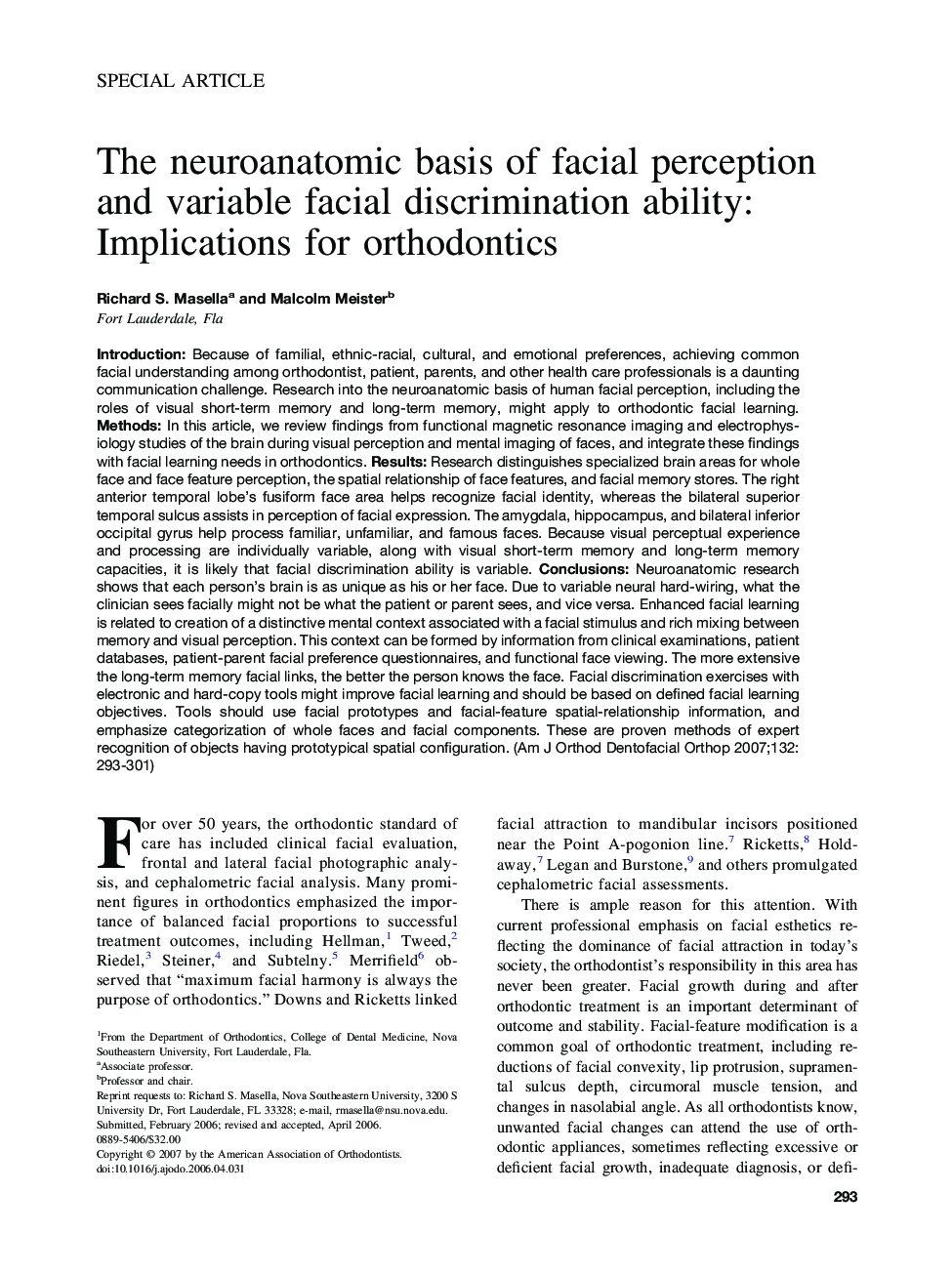| کد مقاله | کد نشریه | سال انتشار | مقاله انگلیسی | نسخه تمام متن |
|---|---|---|---|---|
| 3118924 | 1582789 | 2007 | 9 صفحه PDF | دانلود رایگان |

Introduction: Because of familial, ethnic-racial, cultural, and emotional preferences, achieving common facial understanding among orthodontist, patient, parents, and other health care professionals is a daunting communication challenge. Research into the neuroanatomic basis of human facial perception, including the roles of visual short-term memory and long-term memory, might apply to orthodontic facial learning. Methods: In this article, we review findings from functional magnetic resonance imaging and electrophysiology studies of the brain during visual perception and mental imaging of faces, and integrate these findings with facial learning needs in orthodontics. Results: Research distinguishes specialized brain areas for whole face and face feature perception, the spatial relationship of face features, and facial memory stores. The right anterior temporal lobe’s fusiform face area helps recognize facial identity, whereas the bilateral superior temporal sulcus assists in perception of facial expression. The amygdala, hippocampus, and bilateral inferior occipital gyrus help process familiar, unfamiliar, and famous faces. Because visual perceptual experience and processing are individually variable, along with visual short-term memory and long-term memory capacities, it is likely that facial discrimination ability is variable. Conclusions: Neuroanatomic research shows that each person’s brain is as unique as his or her face. Due to variable neural hard-wiring, what the clinician sees facially might not be what the patient or parent sees, and vice versa. Enhanced facial learning is related to creation of a distinctive mental context associated with a facial stimulus and rich mixing between memory and visual perception. This context can be formed by information from clinical examinations, patient databases, patient-parent facial preference questionnaires, and functional face viewing. The more extensive the long-term memory facial links, the better the person knows the face. Facial discrimination exercises with electronic and hard-copy tools might improve facial learning and should be based on defined facial learning objectives. Tools should use facial prototypes and facial-feature spatial-relationship information, and emphasize categorization of whole faces and facial components. These are proven methods of expert recognition of objects having prototypical spatial configuration.
Journal: American Journal of Orthodontics and Dentofacial Orthopedics - Volume 132, Issue 3, September 2007, Pages 293–301